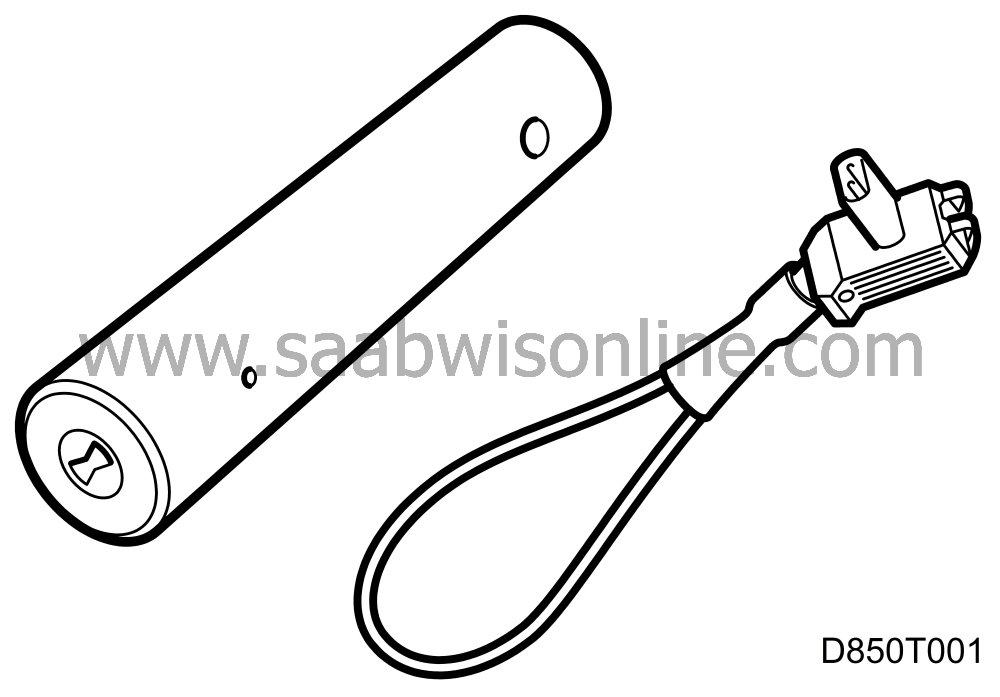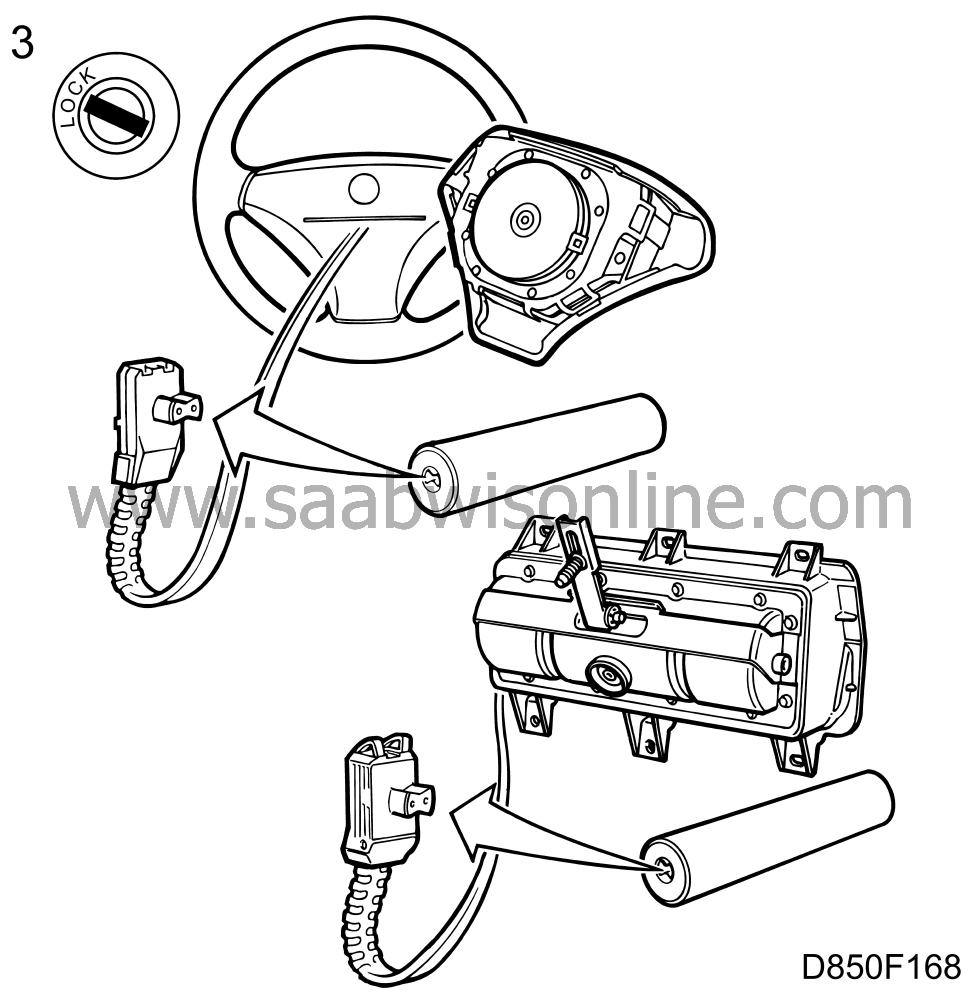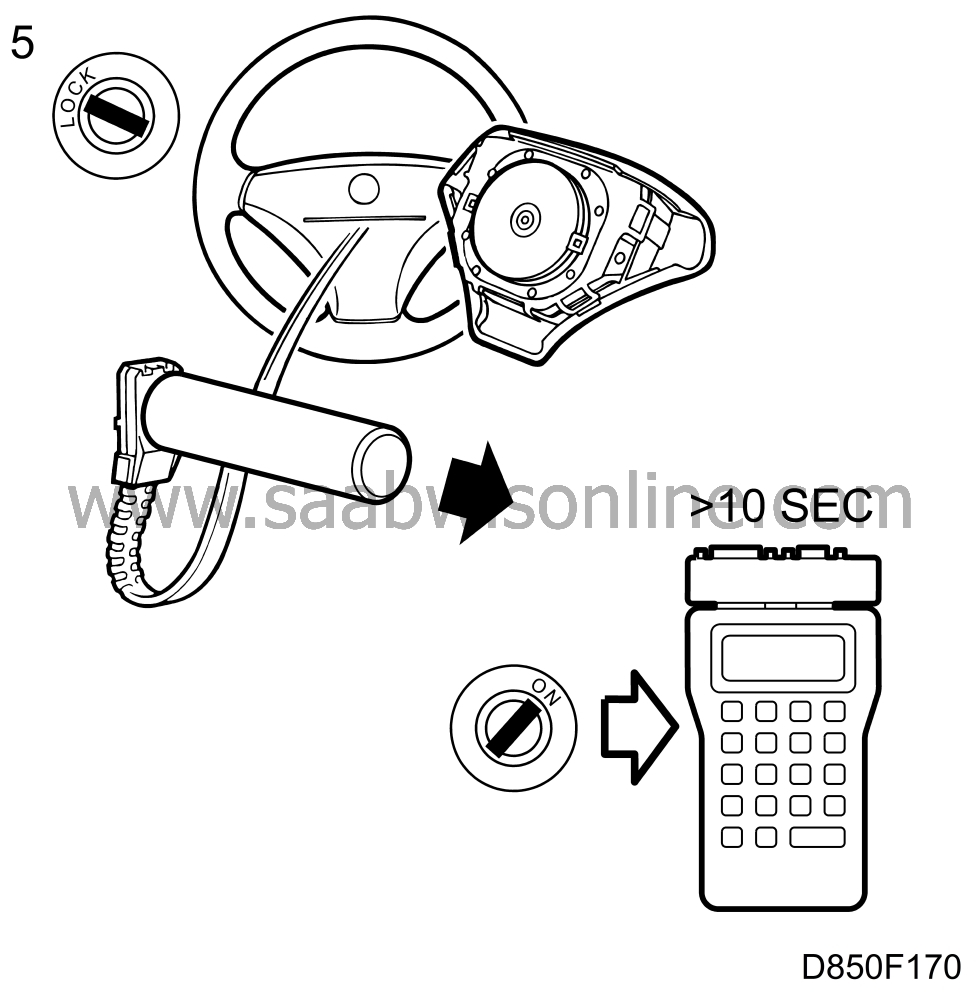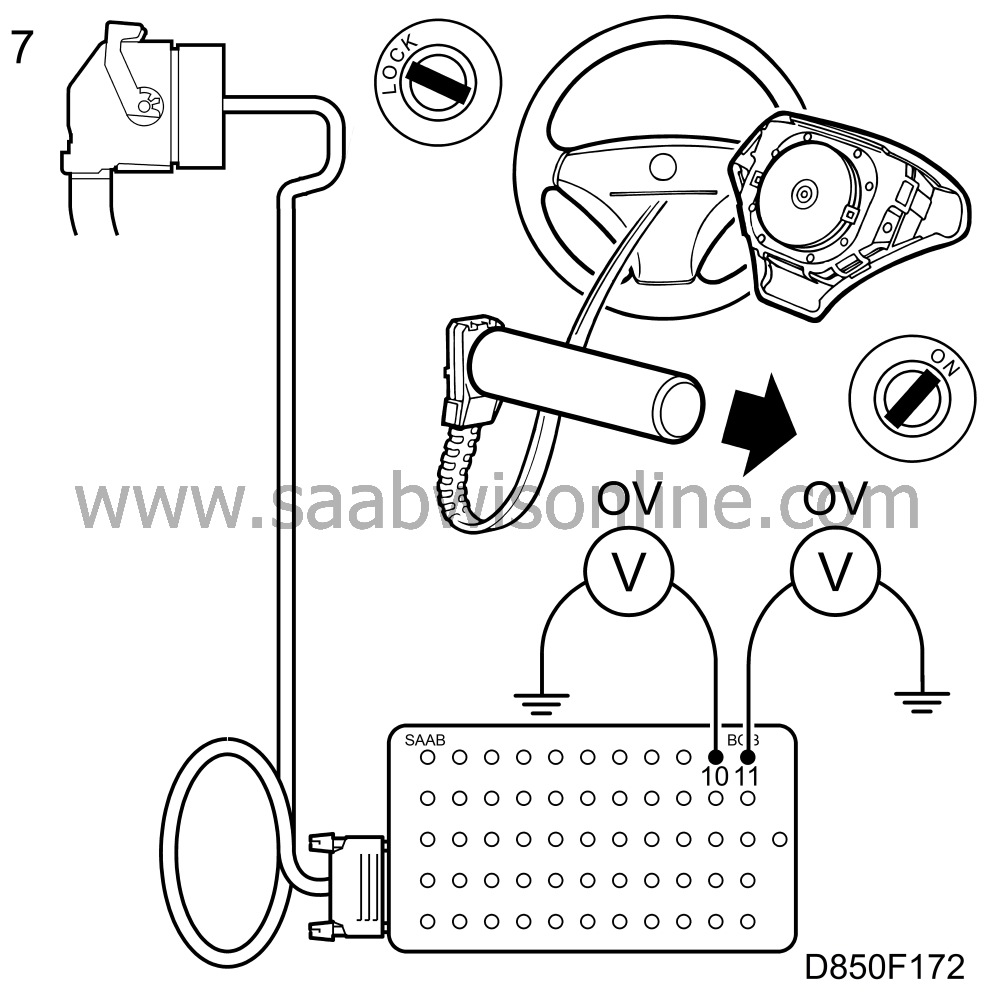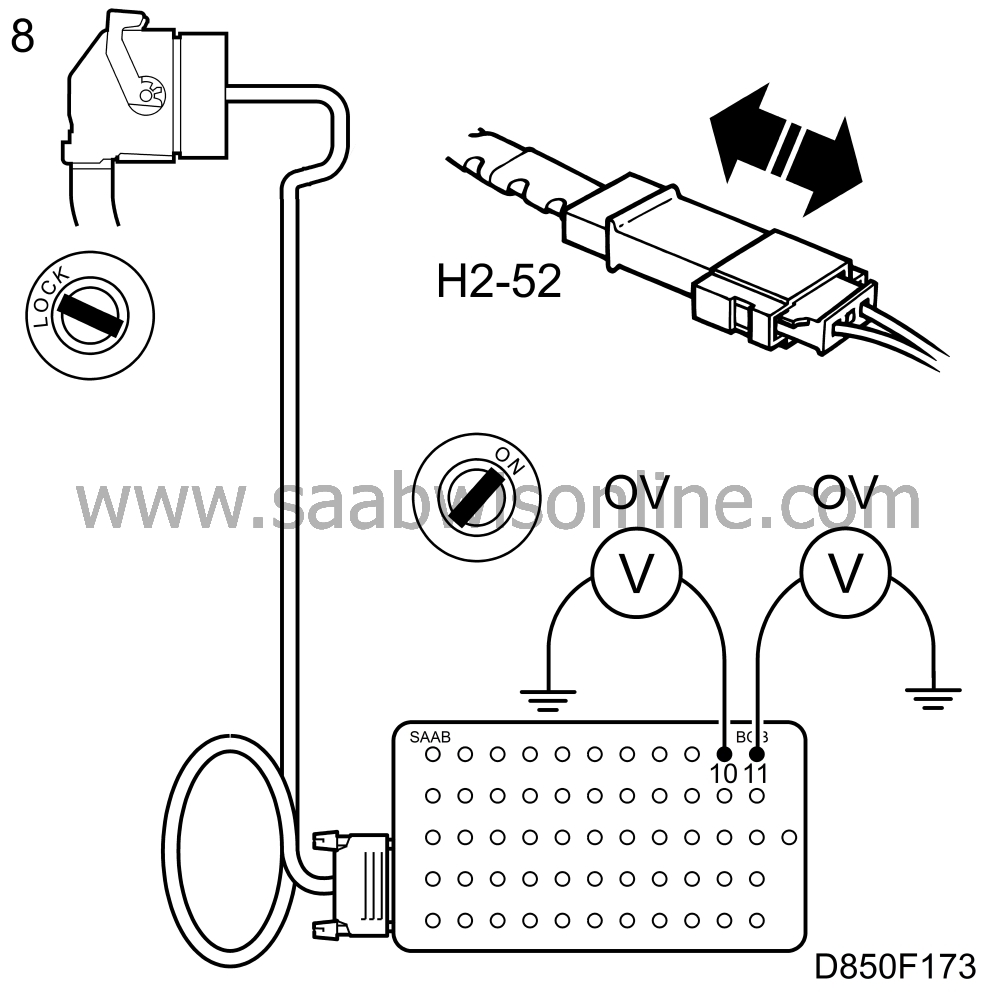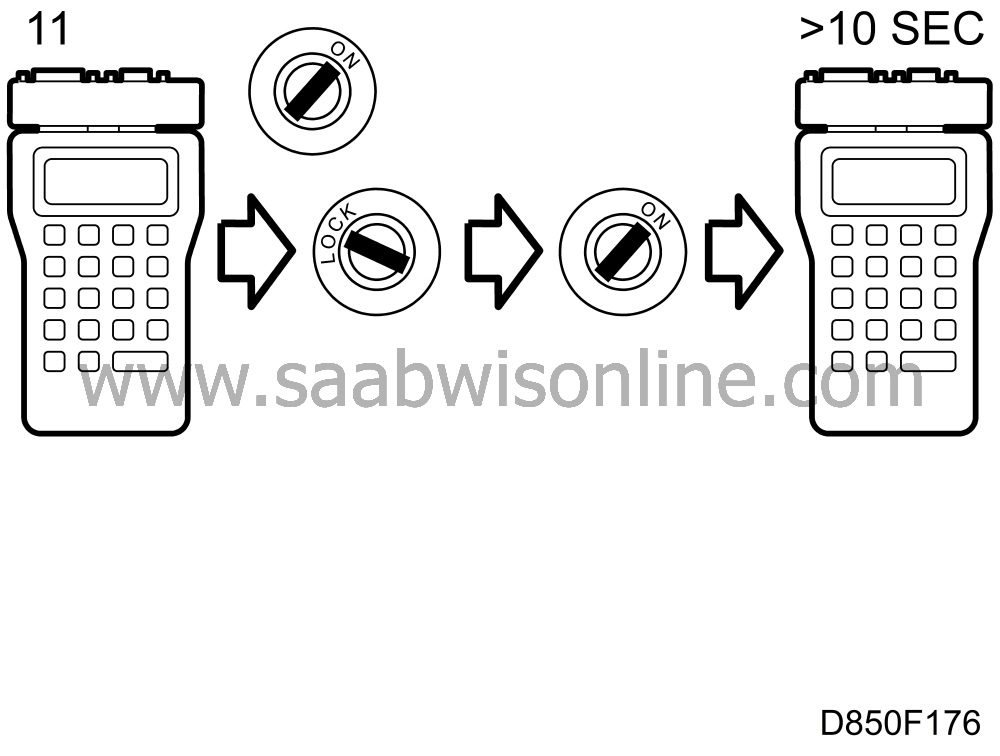Turn off the ignition and remove the negative battery cable. Reconnect the reference resistor to the airbag connector on the driver's side.
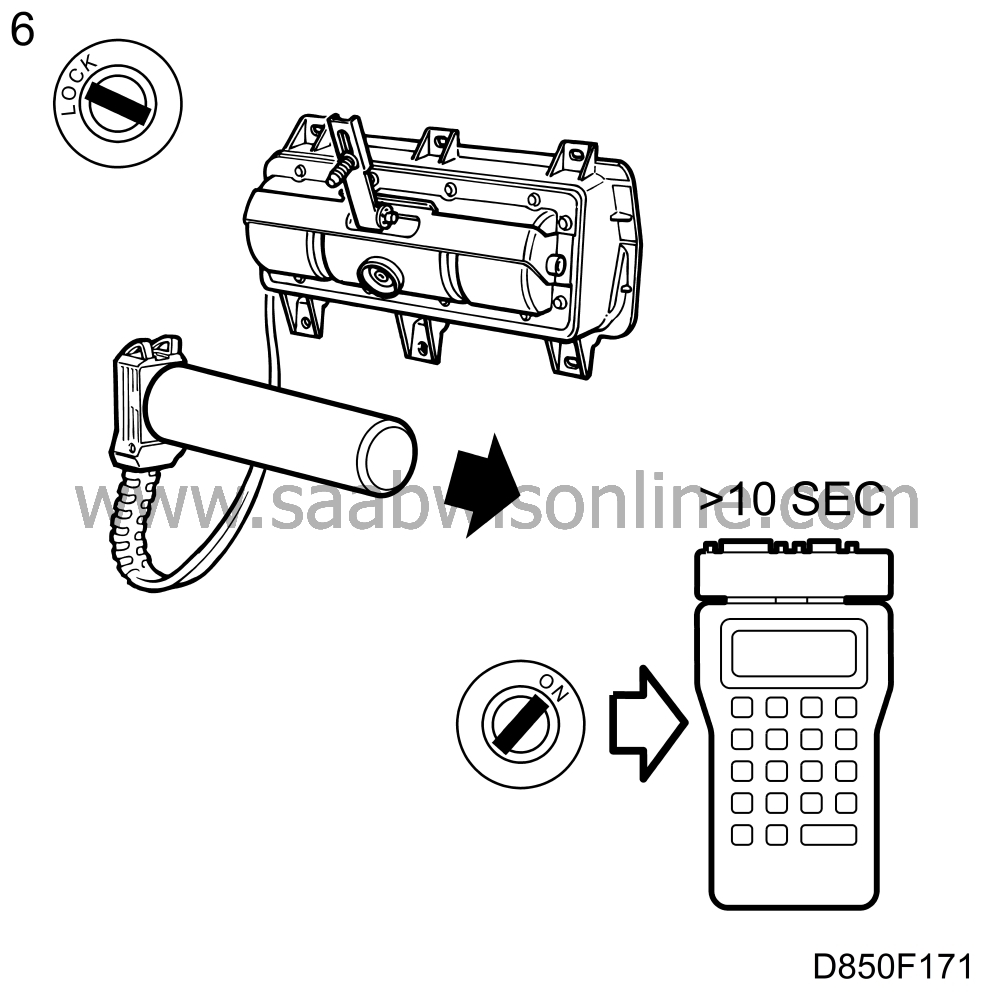
Remove the reference resistor from the passenger airbag connector and connect the passenger airbag.
Refit the negative cable on the battery and turn on the ignition. Wait for at least 10 seconds with the ignition on.
Check to see if the diagnostic trouble code returns.
If the diagnostic trouble code returns:
Turn off the ignition, remove the negative battery cable and change the airbag on the passenger side. Then go to point 11.
If the diagnostic trouble code does not return:
Turn off the ignition and remove the negative battery cable. Unplug the connector from the passenger airbag and reconnect the reference resistor.
Refit the negative cable on the battery and then go on to point 7.
|
 , and an older, part no. 84 71 153
, and an older, part no. 84 71 153
 . The new type has closer tolerance limits and should be used for more reliable diagnosis. The illustrations in the following chapter show the older type of reference resistor.
. The new type has closer tolerance limits and should be used for more reliable diagnosis. The illustrations in the following chapter show the older type of reference resistor.
